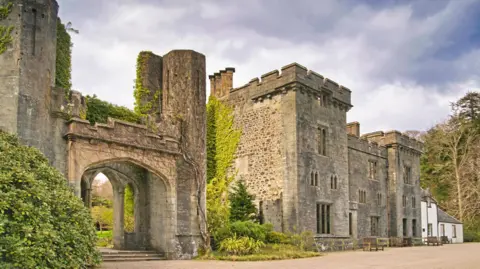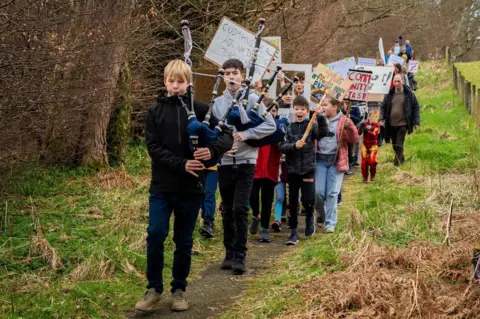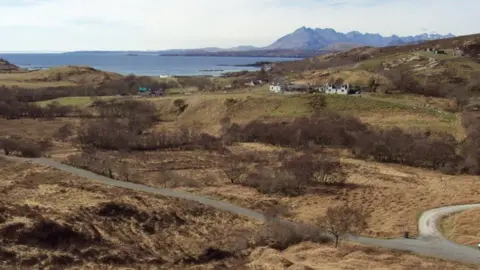Why there are protests over a £6.8m estate sale
 Magnus Graham
Magnus GrahamOne of the largest estates on the Isle of Skye has been put up for sale for offers over almost £6.8m.
South Sleat Estate involves 20,000 acres of land - much of the island's southern Sleat peninsula. Its ruined Armadale Castle is to be offered for sale in the summer.
The owner Clan Donald Lands Trust (CDLT) said it had made the "heart-breaking" decision to sell up due to financial challenges.
But the move has been met with protests by some islanders.
What is the estate's history?
 Getty Images
Getty ImagesIt once formed part of the traditional lands of Clan Donald, which for hundreds of years controlled much of the west coast of Scotland.
The castle and the estate were put for sale in 1971 following the death of Alexander Godfrey Macdonald, 7th Lord Macdonald and High Chief of Clan Donald.
Clan members from across the world set up CDLT, a charitable trust, to buy it.
Why is it being sold?
CDLT's board says it has been open about the charity's long-running economic difficulties.
It said Armadale visitor centre had never been able to pay for itself on a year-round basis, and millions of pounds were needed to renovate buildings on the estate.
CDLT said challenges it had faced due to the Covid pandemic had been "intensified" by recent high inflation.
A spokesperson said: "This is a heart-breaking time for our charity.
"It is hard for the trustees to face the reality of our funding position.
"We must all now look forward and turn this uncertainty into local opportunity for Sleat and our future charitable work."
How have islanders reacted?
The wider Sleat area is home to about 900 people.
The land on the estate itself is mostly used by tenant crofters and farmers.
Dr Andy Williamson, chairman of Sleat Community Council, told BBC Scotland News no-one in the community had known the decision was being made.
He also accused the trust of a lack of consultation.
"Our fears are it could be packaged off or further broken up," he said.
"Our fears are that people might want to buy it simply to put wind turbines on it," he said.
"How does that benefit the community? How does that benefit the people of Sleat and the Isle of Skye?"
A protest was held in the village of Armadale on Sunday.
Young people, played bagpipes or carried placards with slogans opposing the sale, led a march.
The islanders called for a delay in the sale to allow for talks.
 Magnus Graham
Magnus GrahamThe Scottish Land Commission, which advices the Scottish government on land reform, has raised concerns.
It has urged CDLT to take time to engage with the local community.
A spokesperson said: "When large areas of land change hands, we encourage the seller to engage directly with local communities in advance.
"While there is currently no legal requirement for sellers to do this, it should be considered responsible practice.
"It gives communities a chance to understand what the sale could mean for their area, consider community ownership of all or part of the holding, or share future ambitions that can inform the sale."
Is community ownership a possibility?

Large parts of Scotland are already in community hands.
They include the 56,000-acre Galson Estate in north west Lewis - home to almost 2,000 people.
Stornoway Trust is Scotland's oldest community landlord.
It took over a 69,000-acre estate in 1923. The area is home to almost 11,000 people.
CDLT said it was willing to work with community on some elements of the sale.
It said: "We are acutely aware of the challenges a community body will face in raising purchase funds and also demonstrating a viable business plan that meets the needs of ongoing operating costs and building renovations.
"Given CDLT's immediate financial challenges and overriding legal duties, we are unable to withdraw South Sleat Estate from the market.
"But as Armadale Castle is not scheduled to be marketed until early summer 2025, we hope that Sleat Community Trust will use this period of time to explore whether a purchase may be viable for them."
